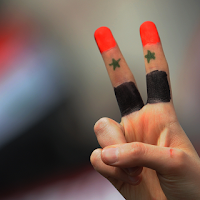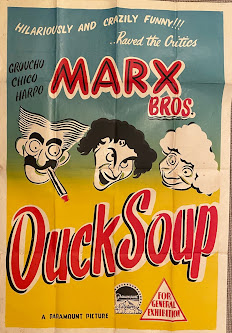By Mary Kaldor, cross-posted from openDemocracy
The United Nations Human Rights Council has described the Syrian government’s repression of peaceful protests as ‘crimes against humanity’. Even the shocking number that is widely quoted of 7,000 people killed cannot convey the sheer horror of what is happening including shelling, torture, arbitrary detention, child-rape and other atrocities. Reports suggest some 50,000 people are missing, some 60,000 have been imprisoned, and a minimum of 15,000 (the number of refugees in Turkey) have been forced to leave their homes.
The scale of violence gripping Syria today has long crossed the line of a domestic issue. The international community is obliged both morally and legally to intervene to stop the violence – to protect Syrian civilians and to establish conditions for peaceful political change. The question is what form should such an intervention take?
What began as an inspiring non-violent protest is degenerating into something that has all the hallmarks of what I call a ‘new war’ ↑ . The Assad regime is showing many of the characteristics of a weak state. The economic sanctions imposed by the west are beginning to take their toll. The regime cannot rely on the army. Reportedly it has been unable to call up more than 60% of the reserves.
When army units are sent to repress protestors there are usually many defections. Instead the regime relies on the Republican Guard, the intelligence agencies and some extremist militias known as Shabbiha, all of whom act with great savagery. The regime has been engaged in fomenting sectarian conflict, distributing weapons and sandbags to the Alawite community and spreading horrendous stories of ethnic hatred on the part of the majority Sunnis. It has also, reportedly begun to release criminals from gaol, a practice pioneered by Milosevic, Saddam Hussein and Gadhafi. Indeed Assad has talked of creating ‘another Afghanistan’.
For its part, the opposition is fragmented. The Syrian National Council leadership is based in Paris. Coordinating Committees have been established inside Syria . The Free Syria Army with leadership based in Anatakya, Turkey, is composed of defecting soldiers who seem to have established their own independent brigades such as the Hamza Al-Qatib Brigade or the Salaheddine Al-Ayoubi brigade called after victims of the repression or historical figures. The SNC has sought to control the FSA including through the establishment of the FSA Military Council led by a higher ranking officer than the leader of the FSA. But it has met stiff resistance and the FSA seems to operate rather independently. Although in an agreement with the Syrian National Council they declared that their strategy was ‘defensive protection of civilians’, there have been a number of high profile offensive operations, such as the attack on the air force headquarters or the assassination of the head of the military hospital in Damascus just yesterday (though the FSA did not take responsibility for this). Al Qaeda ↑ has also announced support for the opposition and may have been responsible for spectacular bomb attacks in Damascus and Aleppo.
New wars have a tendency to spread and to last a long time. Opponents of external intervention warn of the potential of igniting protracted conflict with catastrophic regional spillovers but this is even more likely to happen in the absence of any intervention, if the current violence in Syria today is left unchecked.
The events in Syria take place at the intersection of two contravening dynamics. On the one hand, the Arab Spring is sweeping away decades-old authoritarian regimes and threatening to upend the geopolitical status quo far beyond the region. It is creating unfamiliar and uncomfortable uncertainties from Moscow to Washington and from Bejing to Tel Aviv. On the other hand, the escalating confrontation with Iran over its quest to acquire nuclear weapons appears to be a classic case of old geopolitics. Actors are sorted into an Iran/ Syria/ Hezbollah axis with Russia and China not far behind and an Israel/US axis with Europe not far behind. Should this polarization spill into an open conflict, it would put an end to the Arab Spring’s democratic tide, turning the region into a proxy battlefield for an old/new cold war between global players. This may be one reason why a series of apparently unrelated developments seem to be moving us inexorably towards this scenario. But the new cold war would not end in the restoration of ‘order and stability’; rather it might mean ongoing persistent violence over ever greater swathes of territory.
Up to now, outside efforts on Syria have been ineffectual. Sanctions may have weakened the economy but they do not seem to have affected the determination of those targeted. The Arab League did succeed in sending civilian monitors in in December although there were not enough of them; they did not protect civilians, and they were led by a Sudanese indicted war criminal. Nevertheless, violence does seem to have abated while they were present. But they have been withdrawn and the Arab League turned to the UN. Russia and China vetoed the UN Security Council resolution proposed by the Arab League that called on Assad to step down and hand over power to his Vice President to supervise a transition to democratic elections, giving Assad a sense of impunity. Within hours the regime had attacked the city of Homs; hence the horrific violence that we are witnessing now.
What’s next?
The next step being proposed is a UN Arab League civilian monitoring mission or peace-keeping force or both. Saudi Arabia has turned to the General Assembly which can act when blocked by the Security Council through a Uniting for Peace resolution. This would be combined with talks on a political transition. Opposition groups are suggesting more robust action. The coordinating committees propose that civilian monitors should be accompanied by armed guards. The Syrian National Council has proposed the establishment of a safe haven in the Northern province of Idlib where much of the FSA is based. The safe haven would be declared an international protectorate but would be defended by the FSA backed by western air power.
From the beginning of the uprising over a year ago a dichotomy emerged between those calling for the internationalisation of the conflict and those suggesting that it should be left to the Syrians to resolve it through dialogue. It is clear today that the latter is no longer an option. Indeed it would be morally reprehensible to allow the slaughter to continue unchecked. The key to any intervention is to combine upholding human rights inside Syria with de-escalation of the broader regional conflict. Far from being contradictory, these two goals – human rights and peace – reinforce each other. On the one hand, an intervention in Syria which takes account of Russian and Chinese concerns is likely to allow for a more consensual approach to Iran’s nuclear issue. Likewise, de-escalation of the conflict with Iran should reduce opposition in Moscow and Beijing to a solution that involves the removal of the Assad regime.
There is also supposed to be a dichotomy between political or diplomatic approaches or military approaches. The problem is that political or diplomatic approaches usually refer to talks with the regime and those who are committing crimes against humanity and may effectively legitimate and entrench their political role. On the other hand military approaches tend to mean war-fighting rather than the defensive use of force. The problem with this kind of military intervention is that it can easily escalate and sharpen polarisation and it may end up killing those it is supposed to protect. It can be argued that in Libya, effectively, the west intervened in a war on the side of the rebels rather than being focused on civilian protection and this may or may not have been the right thing to do. But if this were tried in Syria, it could result not in a victory for the rebels but in a widening regional conflict.
A human security approach brings together peace and human rights and involves both political intervention, broadly defined, combined with efforts to directly affect what is happening on the ground. The latter may involve the use of force but not in war fighting ways. This could mean:
- A UN-Arab League civilian monitoring mission, which would establish a presence throughout the contested parts of Syria.Such an approach would focus on minimising violence and creating conditions for peaceful and inclusive political processes as well as broader geo-political efforts to build consensus.
- An international or regional peace force that would establish safe havens under UN/Arab League protection connected by humanitarian corridors so as to affect the reality on the ground.
- Political negotiations aimed at the removal of the Assad regime and an orderly transition to democracy
- De-escalation of the conflict with Iran over nuclear weapons.







0 comments :
Post a Comment